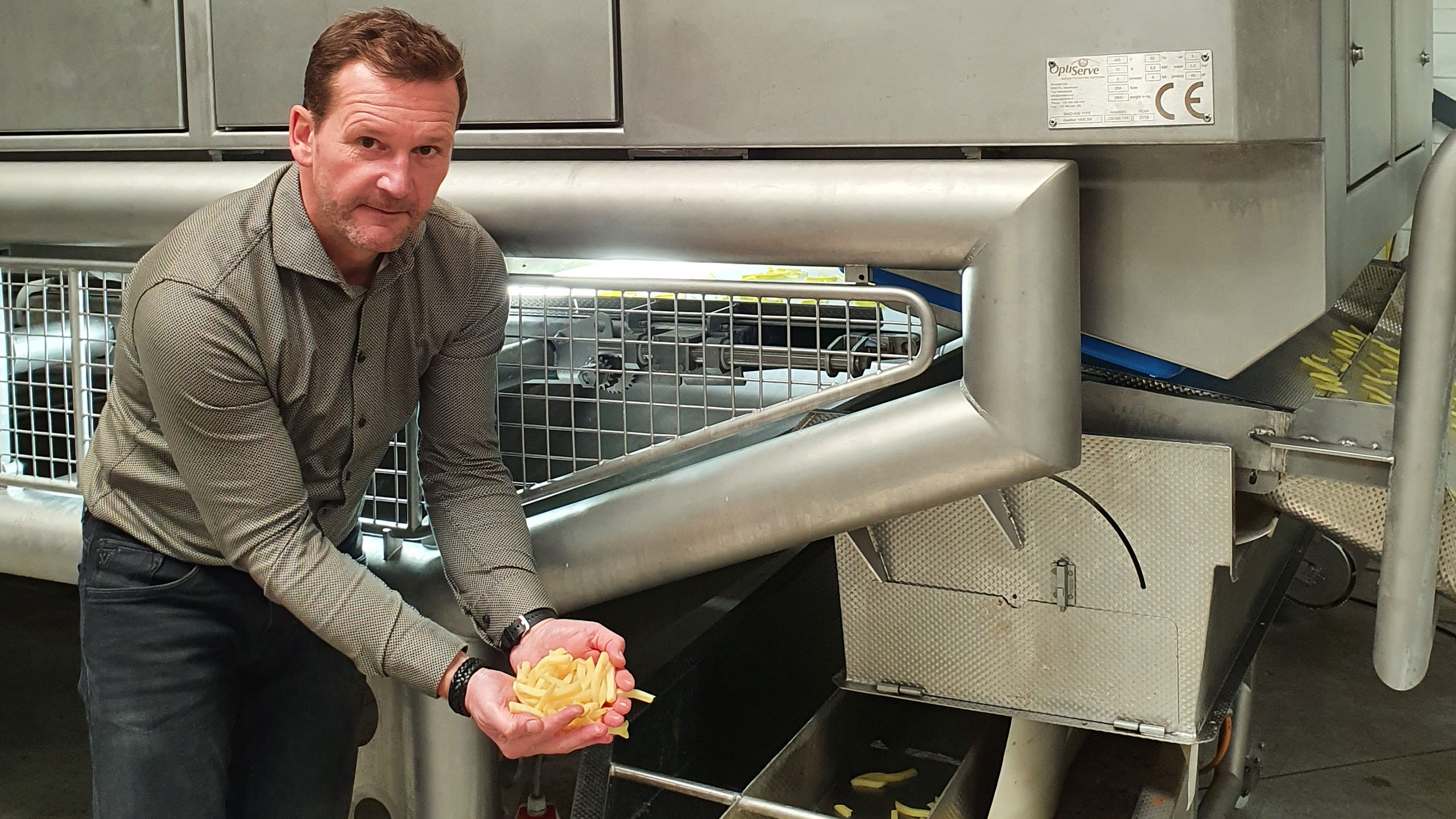Correctors
Sorting has to be done quickly and preferably with the highest possible capacity. The rapid processing of the large volumes involved inevitably also entails reduced accuracy. The error rate therefore rises. So much so at some businesses that Antoine van Kasteren, Managing Director at OptiServe, could see the potential of reverse sorting. ‘The error rate of some of our competitors’ optical sorters was so high that customers were buying our sorter, the Xcalibur, to pick out the good items from the reject line. In other words it was being used as a kind of corrector.’
Reduced waste mountain
According to Antoine, the error rate of these optical sorters is considerable for some products. ‘Take the potato chip industry, for example. One in four chips that are discarded are often absolutely fine. With such error rates, it can be worth reverse-sorting on the line of rejected products in order to retrieve the good chips.’ The fact that the error rates are sometimes so high, according to Antoine, is mainly due to the air puffs that most optical sorters produce. ‘If a sorter spots a reject in the line, the product is removed by means of an air blast. Often, though, the air blast is too strong and the product next to it gets caught up too. A perfectly good chip can end up on the waste pile in this way. We therefore started removing the good chips from the waste stream with our sorter. Incidentally, the error rate on the main line depends on the product on the conveyor belt. It could equally be 1 in 5 or even 1 in 3.’
Intelligent puffing, including for the main line
Reverse sorting was an option for large producers that didn’t want to write off their old sorter immediately and thought it made more sense to purchase an extra machine to sort through the residual flow one more time. However, Antoine also saw opportunities for his Xcaliburs on the main production line. ‘Thanks to a few innovative technologies, our Xcaliburs are more accurate at removing rejects than the competition. This is entirely because of our patented intelligent puffing system. Our sorters’ software ensures that the products on the supply belt are properly separated from each other – what’s known as singulation. This singulation on the conveyor belt prevents you from removing the next product too. In addition, we work with an ejector system that gives an air burst of 1-2 milliseconds and therefore works much more accurately than other air ejector systems, which often use too much air. This system is used in all our Xcalibur optical sorters and is therefore suitable for reverse sorting in the residual stream as well as for bulk sorting on the main line. So it’s no longer just a matter of correcting the competition: we’re also overhauling implementation on the main line.’
Potatoes, carrots and apples
In recent months, OptiServe has mainly focused on even further improvement of this intelligent puffing system. ‘You could say it’s about dotting the i’s,’ says Antoine. ‘We’re doing this mainly on the basis of our practical experience with our customers. We’ve been able to extend that experience in recent years because we’ve discovered more markets. At first we were mainly focused on the potato processing industry and then even more specifically on chips. Crisp producers have now also been added into the mix, but so have other products such as carrots and apples. The fact that this is more than just a sideline for us is illustrated by the introduction of our Xcalibur 3W at the plant of a snack carrot producer. This machine can eject carrots in two categories: those that need to go through the scraper again and those that are rotten.’
SOURCE: AGF PRIMEUR 11 – 2020
